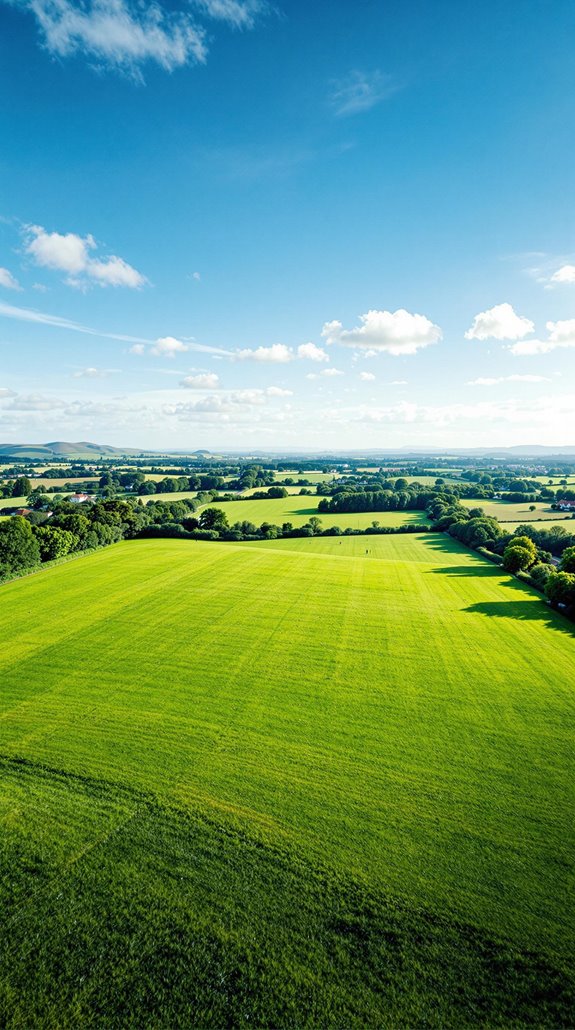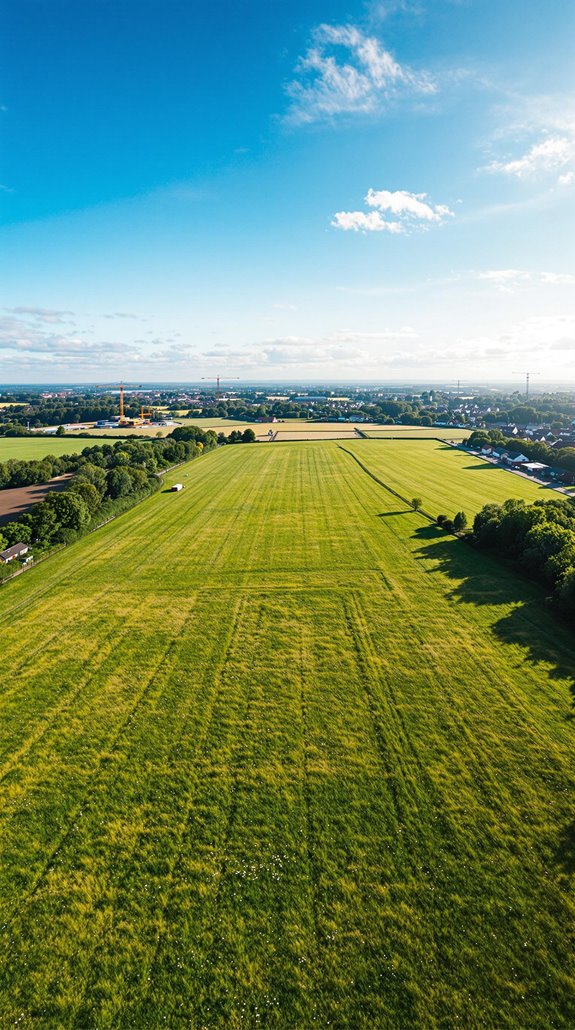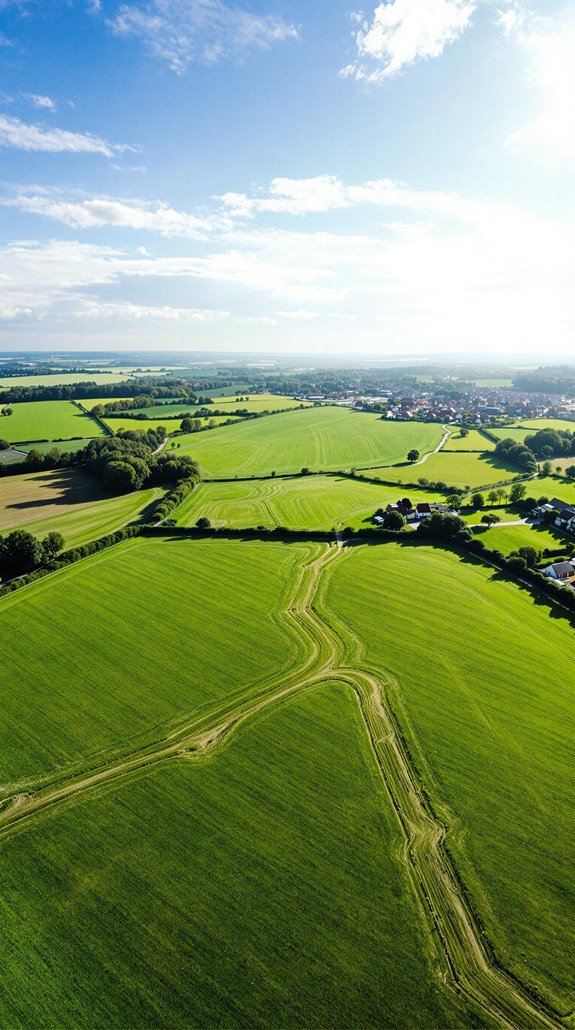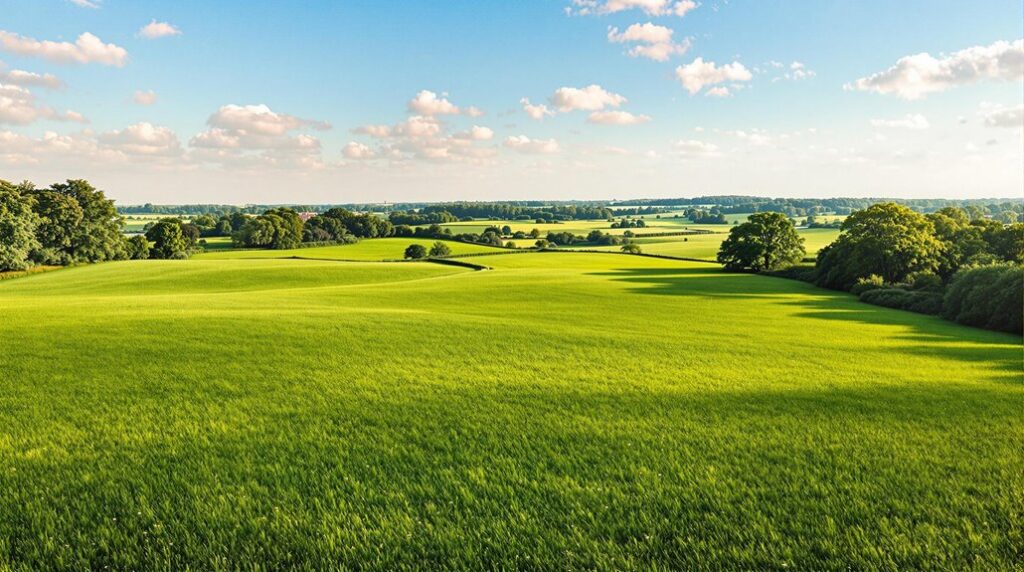I’ve helped dozens of UK homeowners navigate greenfield development, and I’ll tell you this: while these pristine sites offer unmatched design freedom, they’re not the straightforward blank canvas most people imagine. The planning hurdles alone can derail your project before you break ground, and that’s before you’ve tackled infrastructure costs that can easily double your budget. Yet certain sites consistently deliver exceptional returns when you know which regulatory frameworks to leverage.
Key Takeaways
- Greenfield sites are undeveloped land parcels offering complete design freedom for building your ideal home from scratch.
- Expect lower upfront costs due to no demolition needs, but budget for significant infrastructure expenses like utilities.
- Planning permission is challenging due to “brownfield first” policies, requiring thorough preparation and local authority engagement.
- Early community engagement and environmental considerations are essential for successful greenfield development approvals in the UK.
- Green infrastructure integration enhances property value while meeting modern sustainability requirements and regulatory expectations.
What Makes Land Qualify as a Greenfield Site

When evaluating potential development sites, understanding greenfield classification becomes essential for maneuvering UK planning requirements effectively. I’ll help you identify what qualifies land as greenfield so you’re equipped for your development journey.
Greenfield sites are undeveloped parcels with no prior construction history or built structures. You’ll recognize them as land that’s never been used for non-agricultural development, typically appearing as fields, woodlands, or open spaces. What’s vital is the absence of previous building—even vacant lots can qualify if they’ve never hosted structures.
Don’t confuse greenfield with green belt designation; they’re different concepts. Agricultural use doesn’t disqualify land either. Urban greenfield sites exist alongside rural ones. The key identifier is simple: no previous built development, regardless of current landscaping or recreational use. These sites offer developers a high degree of freedom compared to previously developed brownfield or greyfield locations.
Why Greenfield Development Appeals to UK Homebuilders
Given the complexity of UK property development, greenfield sites offer homebuilders a compelling combination of financial and operational advantages that streamline the building process. You’ll find these virgin plots substantially reduce upfront costs since there’s no demolition or decontamination required. The clean slate approach means you won’t blow your budget on unexpected site clearance issues that plague brownfield developments. These sites often feature low-value agricultural land, making them generally less expensive to purchase compared to other development opportunities. Additionally, developing a home on a greenfield site can significantly increase property value as the area becomes more desirable.
From a practical standpoint, greenfield sites deliver faster project timelines. You’re working with undeveloped land that doesn’t require extensive remediation or structural removal. This translates to predictable construction schedules and reduced labor costs. Additionally, these sites typically sit at urban settlement edges, giving you design flexibility while avoiding interference with existing residents during construction phases. The result is a more efficient build process with fewer regulatory hurdles.
Key Obstacles Facing Greenfield Site Development

Despite these compelling advantages, greenfield development presents significant challenges that can derail your project before construction begins. You’ll face substantial infrastructure costs, as utilities like electricity, water, and sewerage must be installed from scratch. Poor road access often requires expensive improvements before you can even start building.
Planning permission becomes your biggest hurdle. The UK’s “brownfield first” policy actively discourages greenfield development, while restrictions in Green Belt areas and AONBs create additional barriers. Local councils frequently exclude greenfield sites from development plans, and you’ll encounter fierce opposition from environmental groups and residents who’ll fight to preserve green spaces. The situation becomes more complex as suitable development land grows increasingly rare in towns and cities where housing demand is highest. It’s crucial to ensure that all aspects of your project adhere to approved planning permissions to avoid potential legal complications.
Environmental concerns add another layer of complexity. You’re fundamentally converting natural habitats into developed land, which contradicts sustainability goals and intensifies regulatory scrutiny throughout your approval process.
Current UK Greenfield Land Market Performance
Market volatility defines the current UK greenfield land landscape, with Q1 2025 data revealing a 0.1% decline in overall values despite annual growth maintaining 1.3%. I’ll guide you through the regional disparities that’ll impact your site selection strategy.
Scotland’s exceptional performance shows 1.9% quarterly growth and 5.9% annual increases, making it your strongest opportunity zone. Conversely, the South East dropped 0.4% quarterly, creating potential value plays for savvy buyers.
Site listings surged 35% in Q1 2025—the highest since 2017—giving you unprecedented choice. Transaction volumes rose 7% year-on-year, though they’re still 19% below historical averages. Northern regions outperformed with 0.1% gains while Western areas declined 0.3%. The December 2024 NPPF changes have generated enthusiasm among landowners, contributing to the increased supply momentum.
Your timing advantage lies in this increased supply meeting selective buyer demand.
How Planning Policies Shape Greenfield Opportunities

While the greenfield land market shows mixed signals, the planning policy landscape has shifted dramatically with the revised NPPF published in December 2024. I’ve seen how these changes create tangible opportunities for those of us pursuing greenfield development.
The new framework mandates considerably higher housing targets, forcing local authorities to identify more developable land. Here’s what matters: authorities can no longer use Green Belt designation alone to avoid meeting housing needs. They must conduct Green Belt reviews, opening previously protected areas for development consideration. Additionally, developers should be aware of permitted development rights that may influence their project timelines and viability.
The “brownfield first” approach remains, but when brownfield sites can’t meet increased targets, greenfield opportunities emerge. I recommend engaging with local authorities’ “call for sites” processes, particularly for schemes exceeding five homes. The golden rules for Green Belt release provide clear development pathways.
Developers are expected to rush planning applications following the revised NPPF publication, creating increased competition for speculative applications in the near term.
Regional Success Stories in Greenfield Housing Development
Across the UK, successful greenfield developments demonstrate how strategic planning and innovative design create thriving communities while addressing housing shortages. I’ve identified key regional examples that showcase best practices you can apply to your own project.
In Swindon, the Oakfield development delivers 239 intergenerational homes using a 15-minute neighbourhood concept, integrating green infrastructure and active travel solutions from the design stage. This approach not only enhances community connectivity but also aligns with affordable home renovation strategies that prioritize sustainability. Glasgow’s Queensland Court and Gardens won the 2021 Landscape Institute Building with Nature Award, retrofitting multi-functional green infrastructure that provides flood management and biodiversity benefits. Plymouth’s Barne Barton transformation earned a Building with Nature Design Award for its masterplan creating 204 new homes with high-quality green infrastructure.
Cornwall’s Church Road development in Illogan demonstrates how smaller greenfield projects can achieve significant impact, delivering 33 new homes with social housing emphasis while incorporating green infrastructure features focused on occupant health and wellbeing.
These successes share common elements: early community engagement, integrated green infrastructure, and partnership approaches that you’ll want to replicate.
Conclusion
I’ve outlined the technical framework for greenfield development success in the UK market. You’ll need thorough site assessment tools, robust planning application software, and infrastructure design capabilities to navigate this complex process. Focus on leveraging GIS mapping systems, environmental impact calculators, and project management platforms to streamline your development timeline. These technical resources will help you transform raw land into your ideal residential property efficiently and cost-effectively.
References
- https://businesssouth.org/04-02-2025-development-land-market-buoyed-by-planning-policy-changes-says-savills/
- https://nexosarquisucr.files.wordpress.com/2016/03/architecturalresearchmethods-groat_wang.pdf
- https://www.thinktimber.co.uk/greenfield-sites-and-brownfield-sites-unlocking-uk-housing/
- https://pce-fet.com/common/library/books/51/2590_[Paul_D._Leedy
- https://content.knightfrank.com/research/1474/documents/en/birmingham-market-update-2025-11865.pdf
- https://en.wikipedia.org/wiki/Greenfield_land
- https://www.nimbusmaps.co.uk/blog/greenfield-land-development-unlocking-opportunities-for-uk-property-developers
- https://addland.com/research/guides/what-is-greenfield
- https://searchland.co.uk/blog/greenfield-land-opportunities-for-developers
- https://www.propertyinvestmentsuk.co.uk/greenfield-site/

